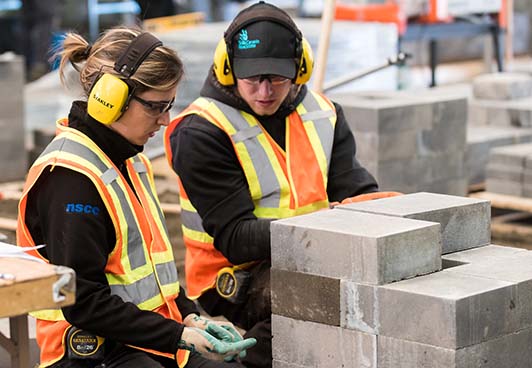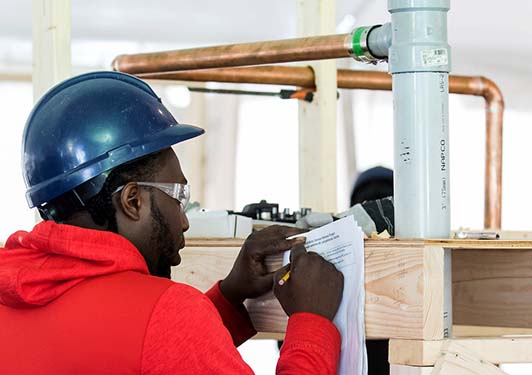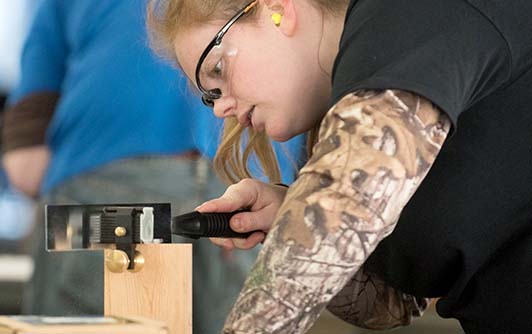Bricklaying
What is bricklaying?
Every project starts with an examination of the plans and technical specifications with the architect or engineer in charge to see what has to be done, followed by material selection and work site preparation. Masons use an assortment of tools such as trowels to spread mortar, plumb lines and squares to check angles and alignment, and power saws, hammers and chisels to shape materials. These tools are used to build walls, floors, partitions, fireplaces, chimneys and other structures made of brick, pre-cast masonry panels, concrete blocks and other masonry materials. Masons must understand the effects that air, moisture and pressure can have on these structures in order to meet construction safety standards.
Bricklayers perform some or all of the following duties:
- Read sketches and blueprints to calculate materials required;
- Cut and trim bricks and concrete blocks to specification using hand and power tools;
- Repair and lay bricks, concrete blocks, stone, structural tiles and similar materials to construct or repair walls, foundations and other structures in residential, industrial and commercial construction;
- Line or reline furnaces, kilns, boilers and similar installations using refractory or acid-resistant bricks, refractory concretes, plastic refractories and other materials;
- Construct and install prefabricated masonry units;
- Lay bricks or other masonry units to build patios, garden walls and other decorative installations.
HOW TO JOIN THE FIELD
Completion of secondary school is usually required.
Completion of a three-to-four-year apprenticeship program or A combination of over four years of work experience in the trade and some high school, college or industry courses in bricklaying is usually required to be eligible for trade certification.
Trade certification for bricklayers is compulsory in Nova Scotia, New Brunswick and Quebec and available, but voluntary, in all other provinces and the Yukon.
Trade certification for stonemasons is available, but voluntary, in Newfoundland and Labrador.
Interprovincial trade certification (Red Seal) is also available to qualified bricklayers.
INDIGENOUS AND REMOTE CONSIDERATIONS
Many remote fly-in communities do not have access to bricks and houses and buildings are made of other lighter materials (easier and cheaper to ship by sealift). This may mean that depending on the community an Indigenous student may need to relocate to a different community to pursue this career.
DISABILITY CONSIDERATIONS
With this job being heavy manual labour, it may not be possible for someone with a severe physical disability. Accommodations may be necessary for someone with a learning disability
Find the right career path for you with our interactive map!
Trouvez le cheminement de carrière qui vous convient grâce à notre carte interactive!
Sample Job Titles
- Apprentice Bricklayer
- Tile Setter
- Bricklayer
- Brick Mason
- Refractory Bricklayer and Repairer
- Stonemason
Companies and Sectors
- Self-employed
- Construction companies
- Landscaping companies
- Masonry companies

Bricklaying and the Skills for Success Program
The key Skills for Success for this career path are:
- Reading
- Adaptability
- Collaboration



